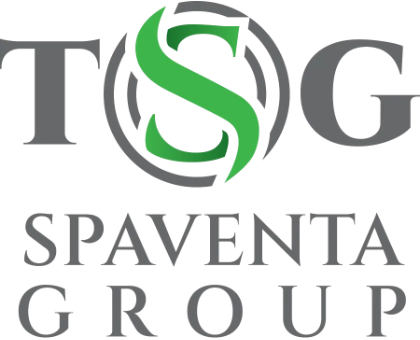How To Prepare For Your First Meeting With a Financial Advisor
Engaging a financial advisor for a comprehensive, personalized financial plan on a one-time basis—which can help lay important groundwork for future engagements—comes with no minimum asset requirements whatsoever and can cost as little as $1,000 to $3,000. But how do you get started—and what can you expect?

In February 2022, market research firm The Harris Poll and financial advisory technology company Intelliflo polled 2,067 American adults about their attitudes towards financial advice.
The most notable finding? Although 71% of Generation Z and Millennial adults express a desire for financial advice, only 32% of surveyed Americans work with a registered financial professional—such as a certified financial planner (CFP) or an investment advisor representative (IAR) employed by a registered investment advisor (RIA).
More alarming is the fact that 15% of respondents say they seek financial advice on online platforms like Instagram or TikTok. While ostensibly free, financial advice dispensed by social media influencers can come at a high cost.
There are a couple of reasons for this. For starters, platforms sustained by advertising revenue encourage virality over quality, so creators are perversely incentivized to churn out provocative and controversial, rather than helpful, content. To make things worse, social media networks are also loosely regulated, which means that creators can offer advice about most topics with few restrictions—even if they are wholly unqualified to do so.
As a result, financial advice on social media runs the gamut from sophisticated, measured, and beneficial to downright wrong and harmful. As Vox explains, “[p]ersonal finance TikTok…at its worst…perpetuates financial myths, scams, and dangerously misleading information. TikTok’s ability to take an average user’s video and show it to millions of people in a matter of hours or days is unmatched…[so] what users end up seeing often isn’t good advice from trusted sources, it’s just one random person’s experience…”.
So what’s the solution? Eschewing social media, or at least the finance-related segment of it, is a good start. Turning to a registered, qualified, and properly credentialed professional for financial advice is the logical next step, though this comes with fees that some Americans worry they cannot afford.
In fact, the same poll reveals that 35% of people don’t think they have enough money to work with a financial advisor. While it’s true that certain financial advisors have minimum asset requirements, other advisors who charge by the hour are happy to work with everyone.
For example, engaging a financial advisor for a comprehensive, personalized financial plan on a one-time basis—which can help lay important groundwork for future engagements—comes with no minimum asset requirements whatsoever and can cost as little as $1,000 to $3,000. But how do you get started—and what can you expect?
1. Get Clarity on Your Financial Situation
Before meeting with a financial advisor for the first time, you’ll want to do some prep work so that you (and they) know where you stand financially.
“Wait,” you retort, “isn’t that my financial advisor’s job?”
Good question. While your financial advisor can offer insights, they can’t read your mind. Providing your financial advisor with as much information about your financial profile as possible will help them offer you targeted, specific, and personalized advice that touches upon your unique situation—rather than generic, one-size-fits-all recommendations.
Specifically, begin by gathering some intel on your earnings and spending, as well as what you own and owe.
Your Personal Income Statement: How Much Do You Earn, Spend, and Save?
First, consider your income and expenses—as well as what’s left over.
How are you making money—from a full-time job, self-employment, rents, dividends, interest, a pension, child support, alimony, or other sources? How much did you make in the near past and how much do you make now? How stable is your income—have you experienced significant decreases or increases in income in the past?
Looking forward, do you expect to make more or less than you do now? When do you expect to retire?
Next, how are you spending your money? It may be helpful to break down your spending into essential and discretionary expenses. Essential expenses include staples like food, shelter, utilities, transportation, and healthcare. Discretionary expenses, meanwhile, include non-essential creature comforts and lifestyle-enhancing purchases like entertainment, travel, dining out, luxury items, and more.
Distinguishing between the two can help you better understand what remains—that is, your savings. Are you earning more than you spend? If so, how much are you saving, and what are you saving for?
Conversely, are you spending more than you earn? If that’s the case, how long will your savings last you? Can you cut any discretionary expenses to moderate your spending?
Your Personal Balance Sheet: What Do You Own and Owe?
Now take stock of your assets, liabilities, and net worth—or what’s left over after you subtract what you owe from what you own.
Assets include cash in checking and savings accounts, investments in tax-advantaged retirement accounts or taxable brokerage accounts, real estate like investment properties or your primary residence, ownership interests in privately-owned firms, alternative investments like cryptocurrency or art, and other things of value—like cars, furniture, fixtures, or jewelry.
Liabilities are financial obligations you owe to others. Mortgages, car notes, personal loans, credit card debt, and payday loans all count as liabilities, as do informal loans from friends, family members, and relatives. Similarly, let your financial advisor know if you think you’ll incur any big-ticket obligations down the road. Examples include a new roof for your house, a new car, major anticipated medical expenses, or college tuition for your children.
Subtract all your liabilities from the sum of your assets, and you’re left with your net worth. Colloquially referred to as one’s wealth, your net worth is a key financial metric that measures the health and robustness of your financial position.
A positive net worth is a good sign—it means that your assets exceed your liabilities. On the contrary, a negative net worth means that your liabilities exceed your assets. No matter your net worth today, you can set yourself up for future success by knowing that figure and tracking it constantly. Doing so will also allow your financial advisor to come up with an actionable plan that you can follow to build your wealth over time.
2. Vet Multiple Financial Advisors
Now that you’ve accounted for your financial situation, you may be eager to move quickly and work with the first financial advisor you can find. In fact, a survey of 1,000 high-net-worth Americans by wealth-tech company Dynasty Financial Partners found that 46% of investors in the market for a financial advisor solely relied on referrals from friends and family—and a whopping 57% hired the first advisor they interviewed.
While you may get lucky and find a great financial advisor on the first try, it’s neither wise to rely on a single source of people for recommendations, nor is it a good idea to entrust your wealth to the first financial advisor you come across.
Instead of turning exclusively to friends and family for referrals, consider vetting a financial advisor via multiple sources. Examine Google reviews, read testimonials from past clients, use FINRA’s BrokerCheck database, and judge the quality of an advisor’s website, public talks, and writings.
Try to find corroborating evidence. If one source speaks well of a financial advisor but another source appears more hesitant to recommend them, you should make a note of that. On the other hand, if multiple uncorrelated sources consistently have good things to say about a financial advisor, you can feel more confident that you’ll have a positive experience with them as well.
Once you’ve shortlisted a few financial advisors, interview all of them, and don’t commit to one until you’ve heard what all of them have to say. Some financial advisors may be happy to offer short 15- to 30-minute consultations free of charge—take advantage of those if they are available to you.
During the interview, try and assess whether the advisor is a good fit for you. You can ask questions about:
Their education, qualifications, and experience
What degrees, certifications, and credentials do they have? How many clients have they worked with in the past? How much money do they manage? How many customized financial plans have they created for clients?
The level of service you can expect to receive.
How many clients do they work with at any given time? How regularly will you meet with them? How soon can you expect to receive replies to questions that come up?
How your advisor and their firm are compensated.
Are they fee-only or fee-based? Or, are they commission-based? Are they a fiduciary? Do they charge a flat fee or an AUM-based fee? How much will their services cost you?
The scope of their services and whether they’re a good match for your specific financial needs.
What type of financial advisor are they? Do they offer asset management or wealth management services? What about adjacent services, like tax, accounting, or estate planning? Do they tailor their services to clients to a specific demographic (e.g. physicians, retirees, high-net-worth individuals, etc.) or specialize in helping their clients achieve a certain financial goal (e.g. get out of debt, diversify into alternative investments, save for retirement, transition out of a family business, etc.)?
A successful interview will also involve a back-and-forth between you and your prospective financial advisor, which means that you should feel prepared to answer some questions yourself. Financial advisors may ask about:
- Your overarching financial goals. Do you want to get a handle on your spending? Retire early? Support loved ones? Leave a sizable bequest to charity?
- Your investment objectives and risk tolerance. Are you looking to accumulate, preserve, or transfer your wealth? How much volatility can you handle—and what does your optimal asset allocation look like? Do alternative investments make sense for you?
- Your non-financial goals, and how money can help you achieve them. Do you want to work less and spend more time with family? Would you like to pursue further education or a career change, even if it means taking a pay cut? Do you want to live abroad?
3. Next Steps
Once you’ve thoroughly vetted several financial advisors, you can move forward with the one that best suits your needs.
You and your financial advisor will sign an engagement letter, a legally binding agreement that details what services your financial advisor will provide and how much those services will cost.
After you become a client, you can schedule meetings with your financial advisor to develop a roadmap and discuss your financial goals in more detail. Depending on the scope of your engagement, your financial advisor may help you come up with a budget, draft a comprehensive financial plan for you, manage your investment portfolio on your behalf, or provide tax and estate planning services.
If you like what your financial advisor has to offer, you can consider working with them on an ongoing basis. Setting up annual, quarterly, or monthly meetings with your financial advisor gives you the chance to ask questions and receive recommendations on a regular cadence. If your financial advisor also provides asset or wealth management services, you’ll also be able to monitor their performance over time.
We Welcome the Opportunity to Help You Achieve Your Financial Goals
Regardless of whether you need a one-time financial plan or want advice for the long haul, our experienced financial advisors at TSG Alpha Partners are excited to serve investors like yourself.
With broad expertise in financial, retirement, and estate planning, our advisors can help you create a budget, provide access to alternative investment opportunities, and partner with you to achieve your long-term financial goals.



